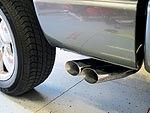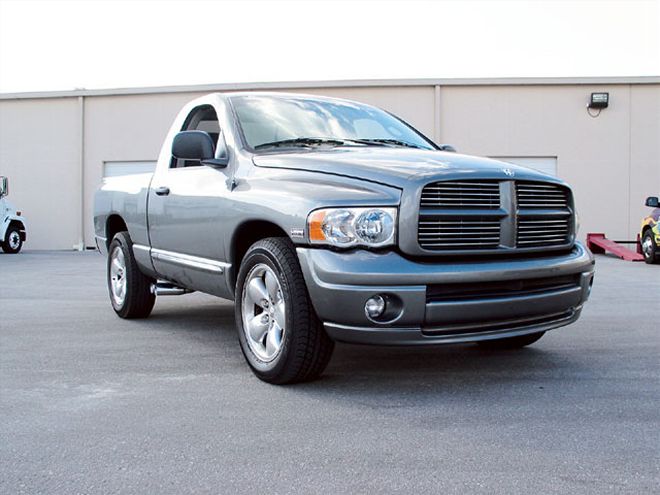

It seems we here at Mopar Muscle have a learning disability. You might recall this '05 Dodge Ram 1500 from last month's "Pandora's Box" article. Struggling with the obstinate 5.7L Hemi for months, we thought we had finally landed ourselves a pretty stout combination: a factory looking Ram 1500 that acted like its older sibling-the SRT-10 Viper truck. Well, maybe not that fast, but we're getting there. Only the minutest of changes were made: a cold air box, a throttle-body spacer, short-tube headers, a 50-state-legal single-tube exhaust, and a Superchips programmer. We were able to click off eighth-mile times comparable to the new R/T Charger. With our best time a 9.64 at 77 mph (a 15.11 on the quarter-mile), we felt the Hemi still had a little more in it. With our Ram shaving off more and more time at the track, we thought only the slightest nudge would push us over into the 14-second threshold.
We had several "hot button" issues with the current performance of our Ram. First was the super-restrictive factory exhaust leading from the catalytic converters to the single outlet tube Bassani muffler. Second was weight-the truck comes from Auburn Hills, Michigan, weighing in at nearly 5,100-pounds. Third was traction-the truck was still smoking its single factory rubber down the strip, an issue that will be tackled later.
Bassani Xhaust was right on target again, offering us their side-exit, dual-pipe system. This time around, the kit was a true bolt-in system with only a few minutes of cutting needed with the saws-all. The kit came with several mandrel-bent pieces-four lengths in total-each with a flared end, the low-restriction muffler, and dual 90-degree tailpipes with polished tips. Metal clamps were all that was needed to cinch down the flared ends that slid over the piping, making it leak-free.
The job took less than three hours with the use of a car lift. for those of you without access to such a handy shop tool, working on your back will slow down the process a little.
We initially removed the exhaust system to measure out where we felt the cuts would have to be made and visualize what changes, if any, would need to be made. The answer was none. Cuts on both pipes at equal distance from the aft transmission crossmember were made with a saws-all. With the factory pipes shortened, both pieces slid into place, an extended pipe that crossed from the driver side to the right and a straight pipe on the passenger side, which needed to be shortened slightly. The muffler mated perfectly in place. Bassani included a hanger bracket that mounted to the rear transmission mount, which allowed for the unused rear exhaust hanger rubber to be relocated forward.
The factory Y-pipe flows from the cats back to the muffler, meeting both pipes together tightly, restricting the flow by almost half the inner diameter of the pipes, costing imperative flow numbers, which means lost horsepower. Bassani's system has no such restrictions, allowing optimal flow by tunneling the exhaust through separate pipes into a performance muffler and out their own respective outlet. The exhaust note reminded us of the familiar "baarrap!" made by '50s hot rods and early musclecars-a sweet sound from a 50-state-smog-legal pickup truck. The aesthetics of the system are designed to resemble the SVT Lightning truck, an aft-cat forward exit dual system. Made with heat resistant stainless steel, Bassani has mastered the art of reserved noise levels until the throttle demands otherwise. The side-system offers little more than a deep gurgle when waiting at the light or at cruising speeds, but when the pedal is mashed to the floor, the pipes let out a roar like side-pipes, singing pure '60s muscle to the ears.
Hoping to see a significant gain in our track times, we took it to our local strip, the Lakeland Motorsports Park. On a Thursday evening we filled our tank halfway up with the good stuff and reset our computer to the Superchips 93-octane setting. Easing down the throttle so not to break the tires loose, our near-totally stock Ram ran a 9.57 at 78 mph. Doing our conversion equation, that comes out to a 15.02. Close, but still not a 14-second quarter-mile. Maybe next time.